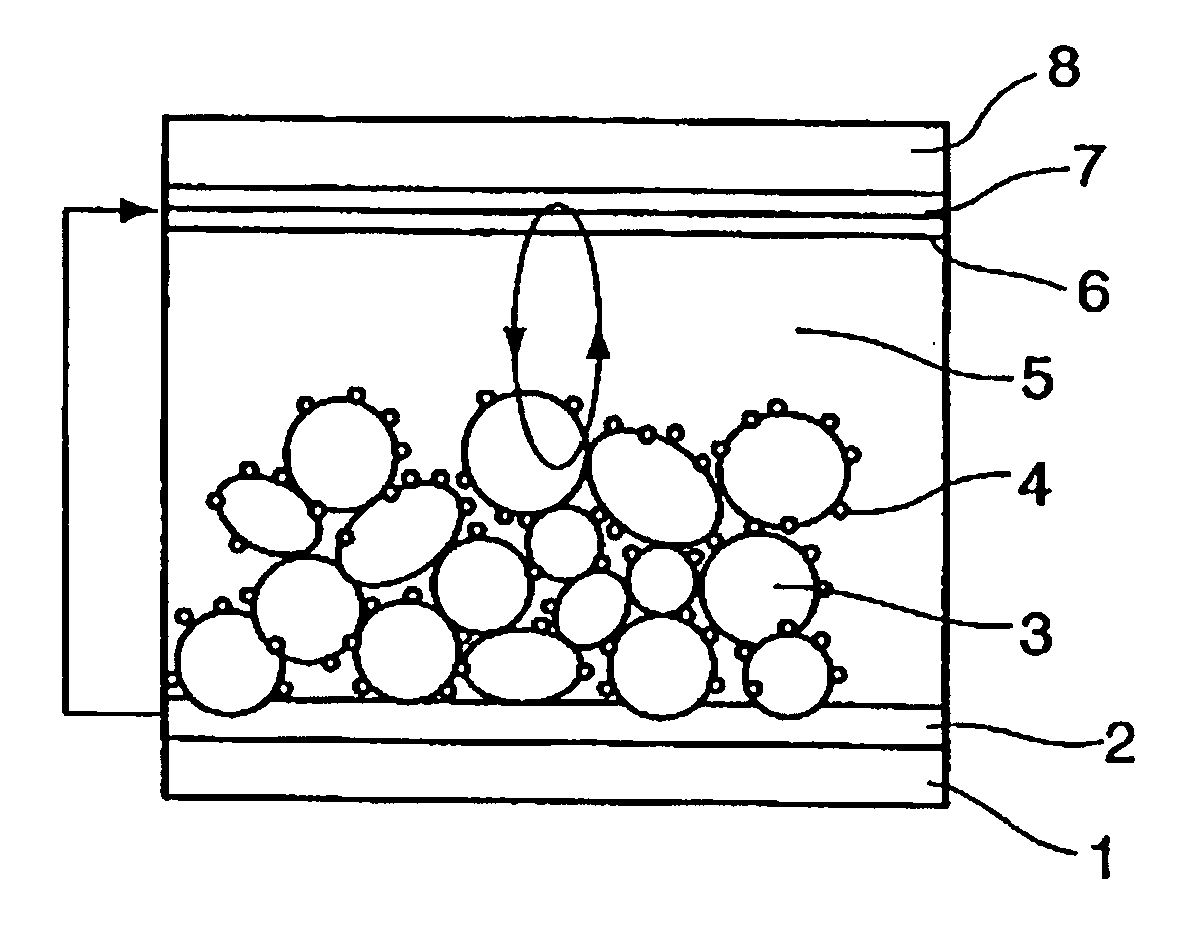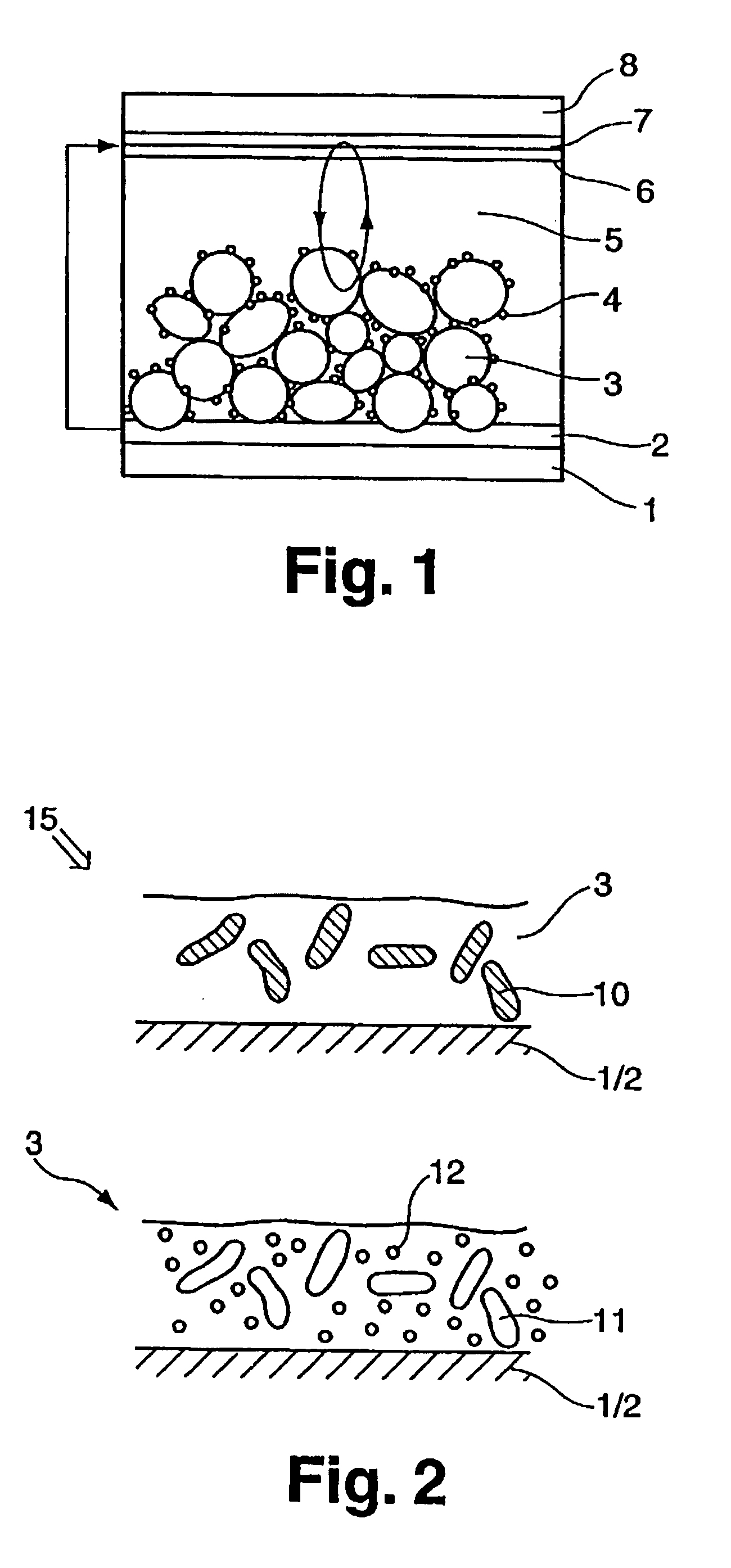Method for producing the photoelectrode of a solar cell
a solar cell and photoelectrode technology, applied in the direction of electrolytic capacitors, pv power plants, solid-state devices, etc., can solve the problems of poor conductivity of polymer hole conductors or high viscosity electrolytes recently in use, and achieve the effects of increasing the generatable photocurrent, increasing the conductivity of electrolytes, and increasing light absorption
- Summary
- Abstract
- Description
- Claims
- Application Information
AI Technical Summary
Benefits of technology
Problems solved by technology
Method used
Image
Examples
Embodiment Construction
[0019]FIG. 1 shows the typical build-up of a dye solar cell as it can also be built according to the present invention. The solar cell is delimited on both sides by two glass substrates 1,8, at the inner sides of each a layer 2,7 of F:SnO2 is applied. The layer 3 of semiconductor material, in the present example TiO2, is applied on one of these layers. The cavities generated according to the present method are not shown in the FIGURE. The single nanocrystalline particles of the semiconductor material of layer 3 are coated with a dye 4.
[0020] The photoelectrode of the solar cell is formed by the thin layer 3 of the semiconductor material. The counter electrode comprises a platinum coating 6 on the layer 7. Between the photoelectrode and the counter electrode is the I− / I3− electrolyte 5. The process of generating the photocurrent by oxidation of the dye 4 while donating electrons to the conduction band of the semiconductor material (TiO2) and the return of the electrons via the redox...
PUM
 Login to View More
Login to View More Abstract
Description
Claims
Application Information
 Login to View More
Login to View More - R&D
- Intellectual Property
- Life Sciences
- Materials
- Tech Scout
- Unparalleled Data Quality
- Higher Quality Content
- 60% Fewer Hallucinations
Browse by: Latest US Patents, China's latest patents, Technical Efficacy Thesaurus, Application Domain, Technology Topic, Popular Technical Reports.
© 2025 PatSnap. All rights reserved.Legal|Privacy policy|Modern Slavery Act Transparency Statement|Sitemap|About US| Contact US: help@patsnap.com



